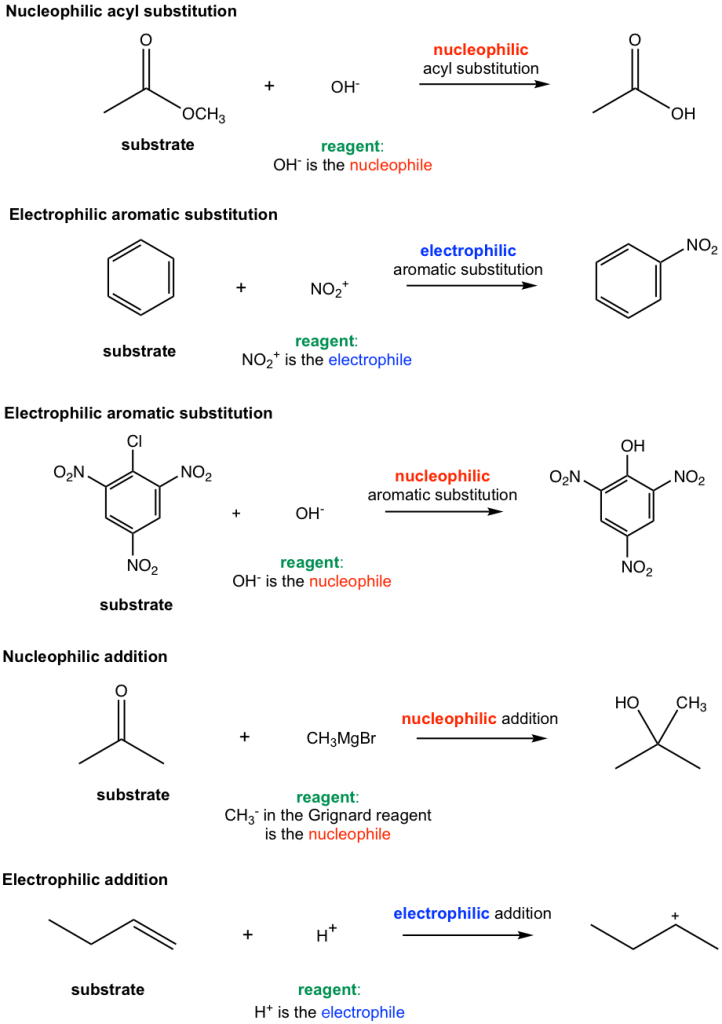In Organic Chemistry, we always encounter a variety of reaction mechanisms with different names, for example, nucleophilic substitution, electrophilic addition, electrophilic substitution, etc. While it is straightforward to understand “substitution” or “addition”, it might be rather challenging, or even confusing, to distinguish between “nucleophilic” or “electrophilic’. A reaction usually involves both nucleophile and electrophile, but why sometimes the mechanism is called “nucleophilic”, and sometimes is called “electrophilic”? The purpose of this special section is to help you understand the name of the reaction mechanism clearly and correctly.
We will use the “nucleophilic substitution” mechanism as an example, the mechanism that you are probably most familiar with, to explain the mechanism name.

For an organic reaction, the major organic reactant could be called the “substrate”, and the other reactants, which are usually smaller, and could be either organic or inorganic, are called the “reagent(s)”. The functional group of the substrate is converted to a different one in an organic reaction, for example, the bromide is converted to alcohol in the above reaction.
Whether the name of the reaction mechanism is “nucleophilic” or “electrophilic” depends on the nature of the reagent! That means, if the reagent is a nucleophile, the reaction mechanism is called “nucleophilic”, if the reagent is an electrophile, the reaction mechanism is called “electrophilic”. For the above reaction, since the reagent hydroxide, OH–, is the nucleophile, the reaction mechanism is therefore called the “nucleophilic substitution”.
That is it! It is not difficult if you know what to look at.
The other common substitution and addition reaction mechanisms we learned in both Book I and this book are summarized below, with an example given for each type of mechanism, for your comparison.


